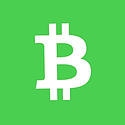![]()
At its policy meeting yesterday the Bank of Japan decided to maintain its current pace of monetary expansion, ignoring some calls for more stimulus. The BoJ currently aims to expand Japan’s monetary base by around 80 trillion yen annually, as it attempts to pull the economy out of an extended recession.
Prices in Japan have been stagnant for around two decades and the bank’s QQE programme is designed to end this persistent lack of inflation. When the BoJ first announced this massive asset purchase programme in April 2013, it pledged to reach 2% inflation in about two years. Well it has been two years and inflation is at 0%, despite the BoJ launching QQE2 in October last year.
Long before the BoJ meet in late April it was already clear that the bank would fail to reach its original goal for inflation, even its own board members admitted as much last year. But policy makers and the market weren’t expecting inflation to be this low so far into the bank’s stimulus program, which opens up the door for QQE3.
Some market participants thought that the bank may introduce QQE3 at the end of April due to the likelihood of it revising down its growth and inflation forecasts. The BoJ did downgrade its view on the economy but reframed from expanding its asset purchase programme. For FY2015, the central bank cut its forecasts for core inflation and GDP to 0.8% and 2.0%, from 1.0% and 2.1% in January, respectively. The BoJ now only expects core-CPI to reach 2% in FY 2016, well beyond its original forecast.
Given this fairly bleak, yet still optimistic outlook one may wonder why the BoJ hasn’t introduced QQE3 yet. The bank still has hope that consumer price growth will improve without another increase in its QQE programme. It is banking on wage inflation helping to spur prices and economy activity after some successful wage negotiations during the spring. It also doesn’t want to look like it’s responding to temporary threats to inflation, which may include the collapse in oil prices.
Nonetheless, there are no real signs of life within Japan’s economy, especially at the ground level. While strong wage growth would go a long way to stimulating the economy, there have only been soft sings of wage price inflation so far and there’s only tentative signs that wage inflation will increase significantly from here. Also, the so-called temporary drags on inflation, like oil, may become more prominent if prices don’t recover, but this will be a good thing for economic activity in Japan in the long-run as it’s a massive importer of key commodities.
Market reaction
The yen initaly shot higher on the back of the BoJ’s decision to maintain its current pace of QQE expansion, before it gave up some of these gains on the bank’s more downbeat view of the economy. In the long-run we think the prospect will keep JPY on the back-foot, but this may change if we see significant signs of wage price inflation. USDJPY is expected to stick fairly close to 120.00, with 118.00 possibly protecting the downside.
Recommended Content
Editors’ Picks
AUD/USD extends its upside above 0.6600, eyes on RBA rate decision

The AUD/USD pair extends its upside around 0.6610 during the Asian session on Monday. The downbeat US employment data for April has exerted some selling pressure on the US Dollar across the board. Investors will closely monitor the Reserve Bank of Australia interest rate decision on Tuesday.
EUR/USD: Optimism prevailed, hurting US Dollar demand

The EUR/USD pair advanced for a third consecutive week, accumulating a measly 160 pips in that period. The pair trades around 1.0760 ahead of the close after tumultuous headlines failed to trigger a clear directional path.
Gold bears take action on mixed signals from US economy

Gold price fell more than 2% for the second consecutive week, erased a small portion of its losses but finally came under renewed bearish pressure. The near-term technical outlook points to a loss of bullish momentum as the market focus shifts to Fedspeak.
Bitcoin Cash could become a Cardano partnerchain as 66% of 11.3K voters say “Aye”

Bitcoin Cash is the current mania in the Cardano ecosystem following a proposal by the network’s executive inviting the public to vote on X, about a possible integration.
Week ahead: BoE and RBA decisions headline a calm week

Bank of England meets on Thursday, unlikely to signal rate cuts. Reserve Bank of Australia could maintain a higher-for-longer stance. Elsewhere, Bank of Japan releases summary of opinions.